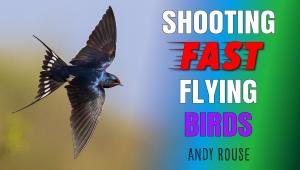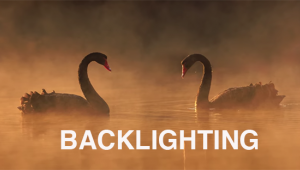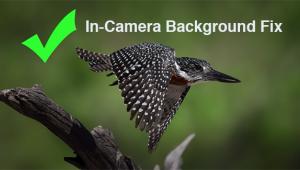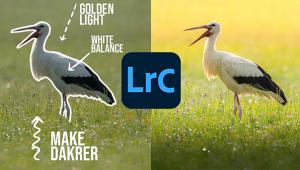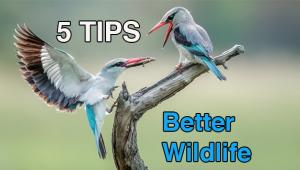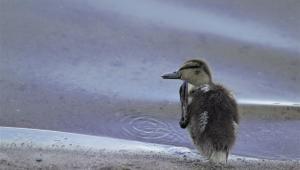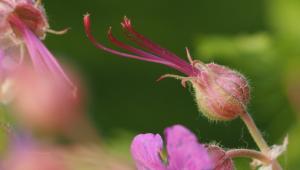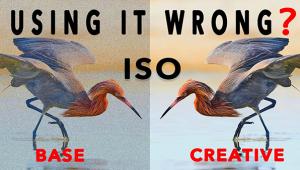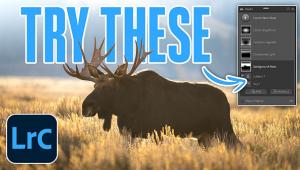Off the Grid: Photographing In Alaska’s Vast ANWR, The Largest Wildlife Refuge In North America

All Photos © Chuck Graham
The Arctic National Wildlife Refuge (ANWR) in northeastern Alaska consists of 19,286,722 acres along the Alaskan North Slope, and supports a greater diversity of flora and fauna than anywhere else in the Arctic Circle. It was established in 1960 and is governed by the U.S. Fish and Wildlife Service. It receives only about 1,500 visitors a year.
There are no roads in the ANWR, and the only way in is backpacking or getting dropped by bush plane. On a recent photo trip, I flew in with three others, and we then loaded up our four-man raft with two weeks of provisions and paddled down three rivers before finishing at the Arctic Ocean. During our photographic journey, we rafted 160 miles, bouncing down the Upper Marsh Fork River on the North Slope of the Brooks Range, converging with the Canning River before cruising down the Staines River, where the vast coastal plain eventually meets up with the frigid Arctic Ocean.
Oil drilling in the ANWR has been a hot topic of debate in the U.S. since 1977. The region of concern lies on the coastal plain, a 1,500,000-acre swath of land known as the “1002” area. The debate stems on how much economically recoverable oil there is in the area weighed against the impacts exploration would have on the wildlife, in particular the Porcupine caribou herd.
The following were my shooting location choices in the ANWR.
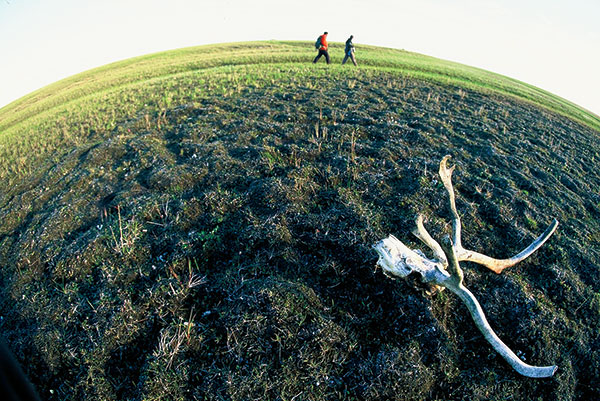

The Brooks Range
South of the expansive coastal plain, the daunting North Slope of the Brooks Range rises over 9,000 feet, and it’s the northernmost extension of the mighty Rocky Mountains, thus marking the Continental Divide. Rivers on this side of the range flow northward to the Arctic Ocean, while south, flowing rivers empty into the Yukon River.
Deep river valleys cut through the Brooks Range and from the air resemble veins running along a forearm. The Upper Marsh Fork was the most challenging river we paddled. Boulder-strewn Class III and IV rapids choked by icepacks and fed by snowmelt while overgrown with spindly willows kept us on full alert until we reached the Canning River.
Cantankerous Arctic terns became favorite photographic subjects hovering above and dive-bombing our four-man raft and two-pack rafts. Dall sheep, the largest of the sheep species, were also intriguing to shoot where they preferred lofty perches on sheer cliffs as we rafted down the Upper Marsh Fork. Inquisitive Arctic ground squirrels posed along the river, on the tundra, and around our tents. One of the hardier photographic subjects found in the Brooks Range were its vibrant wildflowers springing up from snowmelt. Dwarf fireweed, Alaska cotton, and tiny tundra flowers were a nice contrast among the harsh Arctic environment.

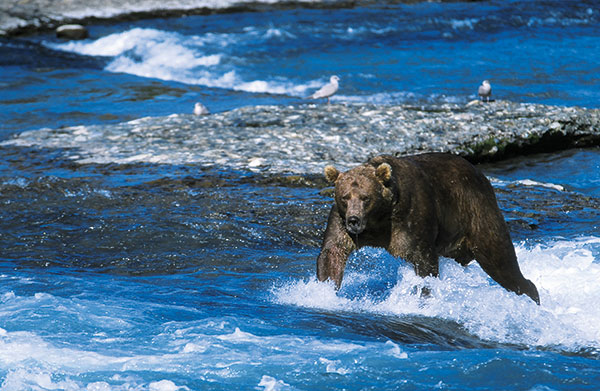
The Coastal Plain
The sweeping Arctic coastal plain stretches northward from the foothills of the Brooks Range to the Arctic Ocean. This expansive area of rolling hills, pockmarked with small, tranquil lakes and braiding rivers flowing northward, is dominated in a lumpy carpet of spongy tundra.
We left the Canning River and the Brooks Range in our wake. With the runnel’s gradient subsiding, the big river boulders were replaced by dense gravel bars that served as natural platforms for photographing grizzly bears, and some of the 130,000 caribou from the Porcupine herd. Bird species we photographed like the semipalmated plover and long-tailed duck we found along many of the gravel bars.
The coastal plain’s vastness was deceiving in that if we wanted to hike toward something it always appeared closer than it really was. So whenever I hiked to photograph something, I always made sure I had plenty of water and calories on me.

Arctic Ocean
Once we reached the Staines River, we could smell and feel the ocean air, crisp and salty. The coastal plain ran out onto long, gritty barrier islands. Abundant ice floes cracked and creaked, drifting westward on the cobalt blue water.
After pitching my tent at the bottom of the Staines, I hiked out to the barrier islands with all my camera gear. The barrier islands were great for photographing all the different wildlife tracks, perfect prints scattered along a graveyard of bleached driftwood.
There are lots of scavengers on the barrier islands, everything from Arctic fox, wolves, and the occasional polar bear. One of my favorite subjects to photograph was caribou antlers either on the tundra or along the barrier islands. These antlers were a constant reminder of just how brutal the Arctic can be.
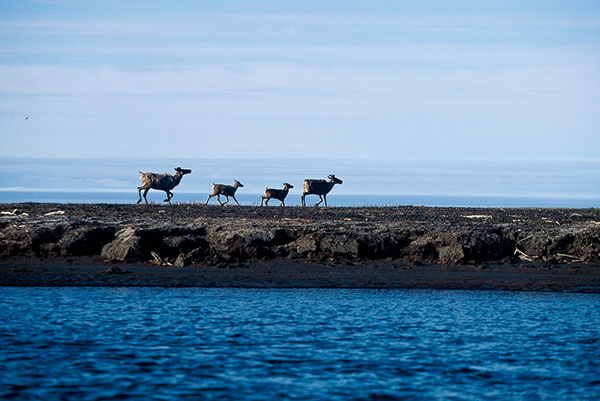
Photo Tips In The Arctic
By mid-June, the sun never dips below the horizon in the Arctic. The best light is from midnight until 5:00 a.m. I got in the routine of eating breakfast at 1:00 p.m., lunch at 6:00 p.m., and dinner at 11:00 p.m. I did all my sleeping from 6:00 a.m. until noon.
Dry bags were essential for keeping all my camping and camera gear, well…dry. Whether paddling the rivers or where we camped, I never had to worry about keeping things out of the wet. While paddling I kept a dry bag with camera gear at my feet always at the ready whether we encountered wildlife or a stunning landscape.
I had one camera body with a wide-angle lens attached. The other camera held a 300mm IS lens. I had two dry bags that served as backpacks. When there was a rough landing along the riverbanks in the rocks, I would throw the dry bag on to protect camera gear from possibly the water but also the rocks.
An important addition to our Alaskan journey were two one-man pack rafts. They were a lot of fun ripping down the Canning River, but they became useful tools while approaching the abundant bird life foraging in the many ponds adjacent to the Arctic Ocean. Instead of wading through the water making lots of noise, I could stay low and slowly approach toward red phalaropes, mew gulls, dunlins, and other avian species.
Mosquitoes were a constant irritant. Deet and a mosquito net were useful deterrents against Alaska’s state bird, but switching lenses rapidly was a challenge. Biologists say if you take the biomass of the mosquitoes and compare it to the biomass of the Porcupine herd, the mosquitoes outweigh the caribou. They were most prolific in the mountains. The breezy coastal plain proved to be the best deterrent.
If You Go: Expeditions Alaska is owned and guided by Carl Donohue. He has over 15 years of experience guiding in Alaska, and is one of the few outfitters leading rafting trips in the ANWR. He’s also a terrific photographer with keen insight on the refuge. For more info, visit www.expeditionsalaska.com.
- Log in or register to post comments

